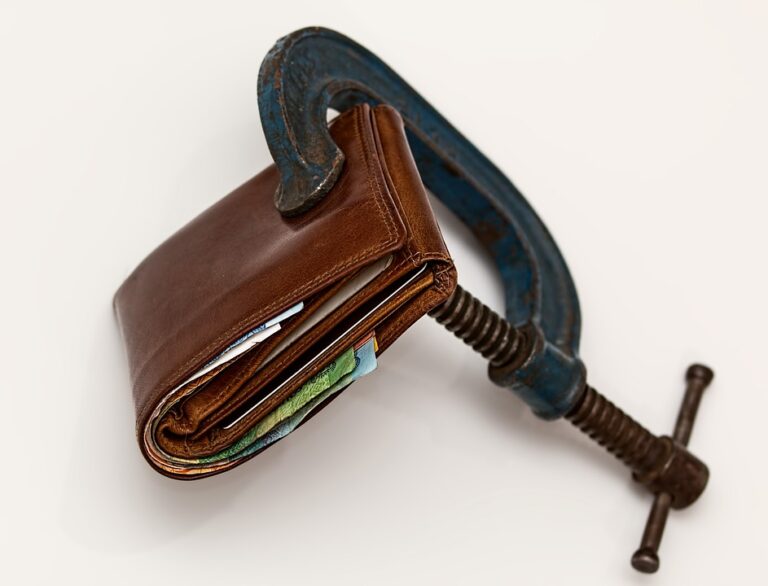Last updated Apr. 18, 2023 by Peter Jakes
The first stop for many beginners in the stock market is penny stocks. If you’re new to stock trading, you’d probably want to start with affordable stocks.
Some new investors to the stock exchange market feel that sifting through penny stocks in search of the next Amazon (AMZN) or Meta (META), is the way to identify the next big thing. In the majority of circumstances, this method will fail.
Investing in Penny Stocks can yield you money if you steer clear of the pitfalls and learn the rules of the game. Here are 10 Things to Know Before Investing in Penny Stocks.
How lucrative are Penny Stocks
Penny stocks are lucrative, it’s highly rewarding as much as it is highly risky. Because of the high risk and potential rewards of investing in penny stocks, many investors steer clear of them while looking for cheap stocks to purchase.
Trading penny stocks requires you to shift your investment mentality and get a deeper understanding that the market for penny stocks is different from a typical stock exchange market.
Penny stock trading has its own set of regulations and approaches that are vastly different. You will need more than standard stock trading tactics to excel in Penny Stocks trading. Also, you can learn how to profitably trade penny stocks with the right information and approach.
What penny stocks are, how they move in the market, and how to increase your chances of success are all discussed in this article.
What Is a Penny Stock?

Penny stocks are not a different kind of stocks, they are simply securities issued by a small-cap or micro-cap company that has a market capitalization of less than $250 million. Some stock experts choose to adopt a lower cut-off value of $1 per share though SEC pegs it at bow $5.
Penny stocks were once traded for cents on the dollar. As we said earlier today, some diehard investors continue to argue that these companies sell for less than $1 per share. Since then, however, the U.S. Securities and Exchange Commission (SEC) has revised the definition to include all stocks priced at less than $5 per share.
The great majority of penny stocks are issued by unproven, small companies with no track record to reliably predict their future market performance. Consequently, the majority of penny stocks are traded over-the-counter (OTC) on OTC Markets Group or OTC Bulletin Board.
Which Exchanges to Find Penny Stocks
If the company has enough shareholder equity, it is still conceivable to see its penny stocks listed on an important exchange like the NASDAQ or the NYSE. Other criteria for seeing a company’s penny stocks are a sufficient number of publicly traded shares and sufficient total company assets.
Some of the other exchanges are as follows:
- Fidelity – $0 per trade
- TD Ameritrade – $6.95 per OTCBB trade
- Charles Schwab – $6.95 per OTCBB trade
- TradeStation – $0 per trade (up to 10,000 shares)
- Interactive Brokers – $.0035 per share
In the blink of an eye, penny stock trades can bring big gains or big losses. Some investors like these risky stock trades, but others stay away. Any way you look at it, stocks with this share price are considered volatile and can change a lot in a short amount of time.
Penny stocks are often shares of small companies that don’t trade very often. In these scenarios, it can be hard to trade penny stocks because there isn’t enough money or interest.
Here’s an example of penny stock gains:
If you had $21,000 to invest and put it all in a penny stock that cost $0.30 per share, you would own 70,000 shares ($21,000 divided by $0.30 = 70,000 shares).
Even a small change in the price of that stock can mean a big percentage gain. For example, if the price of that stock goes from $0.30 per share to $0.40 per share, that’s a 50% gain, and your initial investment of $70,000 is now worth $28,000 (70,000 shares x $0.40 = $28,000).
If that same stock ever went up to $1 per share, you would have made a 500% return on your $28,000 investment and ended up with $70,000.
Good read: Whole Life vs. Universal Life Insurance: Best Insurance for investing?
Who are Penny Stocks for?

Investors with a high-risk tolerance should choose penny stocks. That’s because penny stocks tend to be those of companies that are still in the early stages of development and have minimal resources.
Although penny stock investors have a significant risk of losing their entire investment, the penny stock’s success is due to its capacity to offer higher profit potential. In part, this is why they’re so appealing.
Risk Money and Honest Guides
When it comes to penny stocks, only invest risk capital or funds you can afford to lose. Additionally, you should not venture into the seas of low-priced shares unless you have acquired substantial knowledge.
Also, gather strong tolerance for the potential volatility that is sometimes associated with investments trading at the lowest prices.
It’s easy to see cheap stocks and get excited, however, learn from investors that have extensive industry knowledge. An expert can assist you to avoid making errors, and you can gain from their experiences, whether you’re discussing penny stocks, home improvement, cuisine, or yoga. The quality of your outcomes is related to the quality of your guide.
10 Things to Know Before Investing in Penny Stocks
(Penny Stock Trading Risks to Avoid)
The truth is that investing in penny stocks isn’t going to make you a millionaire. However, the chances are that you will get lucky if you learn the ropes. Penny stocks can be a useful addition to the stock market portfolios of more seasoned investors. Before investing in penny stocks, you, as an investor, should be investors should be aware of the following major dangers.
Limited Liquidity of Penny Stock Companies
Large corporations are typically highly liquid, with numerous shares constantly changing hands.
Penny stock companies typically fall on the opposite end of this scale, with few shares and low volatility. This limited liquidity can make it difficult to immediately purchase or sell shares without affecting the stock price.
As a result, the stocks in your portfolio may not sell fast or must be sold at a discount to be removed.

The Penny Stock Companies Are Unknown
Alongside having few shares, several penny stocks come from companies with little to no track record. Even if they look good on paper, these ventures have yet to prove themselves in the real world. There’s simply no way to know for sure if they have what it takes to stand the test of time.
While penny stocks can be excellent short-term plays, many do not survive in the end.
High Risk of Fraud
While fraud is relatively uncommon on the NASDAQ and NYSE because of the tight laws that stocks must adhere to, it is considerably more prevalent on the OTC.
Before selling their shares, these entrepreneurs seek to increase the stock price till it reaches a desirable level. This permits the dominant shareholder to exit with a profit while all other investors immediately incur losses.
Even worse, these tickers may look to be performing well at first glance, luring unwary investors to invest. This demonstrates the importance of studying before making any investment, regardless of size.
Small Market Capitalization
OTC penny stocks tend to have a very low market capitalization, with most small companies on OTC trading platforms valued at under $300 million.
This is why their share price is so low and accessible, but it also means that the company can crumble very easily.
The number of shares you hold will determine how much money you lose when that happens.
Penny Stocks Can be Very Volatile

As penny stocks are prone to dramatic fluctuation (high volatility), many investors assume they will strike gold with a stock that will rise from $0.08 to $8 in two weeks. And it has occurred. If you scour enough investing message boards, you’re bound to come across success stories of investors who made a fortune by “playing the pennies.
Companies that effectively transition from penny stock to power stock are rare. However, when they do exist, they pay off handsomely.
The numbers fluctuate a lot in the penny stock industry, but investors have made over 1,000 percent gains in a few weeks. Finding the right stock is the true challenge.
Good read: What is next after mortgage payoff? (Mortgage 101)
Penny stocks like being incredibly volatile even at such low prices. This turbulence can work for or against you. Share prices can fall drastically in a short period. However, the inverse is also true.
These price-per-share movements might result in big returns if they are timed appropriately. Failure to hit the mark might spell tragedy for your investment.
Lack of Standards
The majority of investors trade penny stocks on the over-the-counter (OTC) market, where there is less of a requirement for companies to disclose their financial information.
True companies can lie about their figures without fear of punishment from a higher authority. When these companies can’t deliver, you as an investor may be put off by their exaggerated stats and start to lose money.
Penny stock companies can be manipulated easily
With low liquidity and lack of information comes an inherent susceptibility to price manipulation. That’s those who will first purchase a large quantity of the stock to artificially inflate the price through misleading statements. Scammers have been found to use a range of media platforms to inaccurately promote the next big stock – known as ‘pump and dump’.
Common Myths About Penny Stocks
Many penny stock myths are risky and simply wrong, causing investors to make important mistakes that might cost them a lot of money.
Here are the most common ones:
“Penny stocks can make you a lot of money, but they’re undiscovered”
Some penny stocks may have a lot of potential, but most of them are so cheap because their businesses are bad or they are outright scams. Penny stocks are much more likely to be from a bad company that is about to go out of business than they are from a hidden gem.
“If the stock rises to just $1, I’ll double my investment”
This is something that new investors frequently say. “The stock is 10 cents now, and if it goes up to $1, I’ll have 10 times my money,” for example. While the arithmetic is correct, the logic is not based on how the market operates.
Stocks grow and fall throughout time based on their profitability and investors’ expectations of future profitability. To be worth ten times its current price, a stock must demonstrate significant future potential to the market.
However, penny stocks almost seldom exhibit this kind of potential. They may surge from time to time, but they will not experience the kind of consistent increase that might make you wealthy.
“My $1 stock is more profitable than that $100 price stock”
Penny stocks appeal to many new investors since they can acquire a large number of stocks compared to the few high-priced equities they can afford. Buying 1,000 shares at $0.25, for instance, would cost them $250. When a stock has a low price, it appears to be more affordable than it is. Then they would think that a $1 increase in the stock’s value equates to a $1,000 gain.
Professional investors, on the other hand, use the P/E ratio or other similar indicators to determine how pricey a stock is. That is, how much of the company’s profits you are entitled to based on the amount you pay for a share of that company. A profitable company’s stock trading at $200 is a lot less expensive than an unprofitable penny stock at any price.
Due to these erroneous assumptions, many investors in penny stocks wind up with nothing because their investment in the penny stock never makes a profit.
What Are Card-Not-Present (CNP) Transactions?
Tip for Minimising Risks in Penny Stocks Trading
Indeed, penny stocks are profitable. However, they can cost you a lot of money. Though penny stocks are an extremely dangerous investment, there are a few things investors can do to reduce the risk. Also, make penny stock trading a rewarding source of additional income.
Start by Paper Trading
By using paper trading, you can:
- Avoid making costly mistakes in the stock market
- Learn how to acquire and sell low-priced shares without risking any money.
To keep track of hypothetical trades in actual equities using hypothetical funds, all you need is a pen and a piece of paper.
In terms of penny stocks, paper trading is the finest method of trading you can engage in. You can better prepare for real stock trading by:
- keeping track of imagined profits and losses.
- Learning the jargon and making blunders
- Appreciating the things learned while paper trading.
After a few months of paper trading, you’ll be considerably more adept at buying and selling speculative stocks than before.
The advantage of picking stocks from the top tiers is; Because they’re well-watched and dependable, they’re less vulnerable to manipulation.
Scams and Red flags to Look out for in Penny Stocks Trading
Unofficial email promotions
The spam involving penny stocks isn’t restricted to e-mails. Chat rooms, Message boards, discussion groups, and even adverts on reputable websites are all home to some notorious penny stocks scams. It goes without saying that you shouldn’t go out and buy a stock that’s extolled in a dubious e-mail. Sadly, some people do, and scammers gain millions of dollars off of unwary investors.
Pump and Dump Penny Stocks Scams
Among the most popular sorts of penny stock scams, there is the “pump and dump.” In a pump-and-dump scam, the bad guys load up on cheap and worthless stock, get naive investors to buy it at inflated prices (pump), and sell their shares off when the buyers force the price up enough (dump). For guidance in avoiding pump and dump frauds, check out the SEC’s article on the issue.
Other types of penny stock scams to avoid:
- Boiler room telemarketing promotions Unverified brokers
- Anything labeled “hot tips”
- Online forum selling

Pump-and-dump scams occur when promoters claim they have access to insider information. Consequently, in an effort to boost prices of previously bought low-cost lots –which are later offloaded for big profits. Don’t fall into the kind of unfortunate investors who act on this advice and end up saddled with high-cost investments they’ll find hard to offload.
Short-and-Distort Scams
This is a variation of the “short and distorts” penny stocks scam. In this example, the scammers profit through short-selling.
An investor who sells short is betting on the price of a stock declines. Shorting is a practice in which an investor borrows stocks from a broker and quickly sells them on the open market.
If the price decreases, the short seller purchases the stocks at a cheaper price. The borrowed shares are subsequently returned to the lender, and the short-seller keeps the profit difference.
Short-selling a penny stock causes its price to decline by spreading false and negative rumors about the company.
Avoid Low Liquidity Penny Stocks.
You’re going to want to be able to cash in your stocks whenever you’re ready. Most penny stocks have volumes of a few thousand shares a day. Penny stock companies with breaking news could have a high volume of millions of shares in a day. This is when you’re likely to cash in.
Bottom Line

In a wrap-up, note that before jumping on the penny stock bandwagon:
- Ensure you do your research
- Only risk what you can afford to lose
- Spread out your penny stocks
- do everything you can to prevent scammers and swindlers.
If you’re new to investing, you probably shouldn’t start with penny stocks. However, it could work for you if:
- You’re sure you understand the risks
- Can find a trustworthy broker
- Can spot a legitimate but undervalued company.
If you want to invest in penny stocks, you’ll need to be a good analyst who can tell the good companies from the bad ones. Also, you should stay away from clear scams. Smart investors stick to businesses they understand or choose to invest in diversified index funds, where they don’t need to understand the businesses to beat the pros.
Frequently Asked Questions (FAQs)
Q: Can I Get Rich Off Penny Stocks?
Everyone wants to get rich on the stock market, and the low price of a penny stock can make it seem like a good way to do so. Admittedly, if a stock you bought for $0.01 goes up to $10 per share, you’ve made a tenfold return on your money, right?
Even though this way of thinking makes sense mathematically, it is not true in the real world. It’s not likely that the company you’re investing in will become the next Amazon or even grow a lot. Penny stocks are cheap for a reason, and a jump like the one above is almost unknown.
Q: What is the best stock trading site for penny stocks?
Online brokerages have several similarities, so test out a few before selecting one. Try to locate a brokerage that has the fewest fees. Because penny stock trading is frequently done on a short-term basis, you don’t want commission fees to eat into each of your deals.
Q: How do I not go wrong in Penny Stocks
- All penny stocks with a lot of debt should be avoided. A debt-to-equity ratio of more than 0.5 is an absolute no-no.
- Beware all penny stocks that are losing money. Check out Equitymaster’s stock screener for companies with a lot of debt.
- Forgo any penny stocks with limited promoter ownership (less than 40%) and penny stocks with promoter pledging.
- All penny stocks that do not generate cash flow from activities should be avoided.
- Ignore any penny stocks where the business is under threat from an external factor such as a change in government legislation.
- Avoid all penny stocks that are not inexpensive. Insist on paying at least 20% less than the book value.
Q: How much money do I need to start day trading penny stocks?
Penny stocks follow the same trading rules as ordinary equities. That means you’ll need at least $25,000 in your account to day trade daily. Otherwise, you can only make three-day transactions every week.
Disclaimer: Stock prices fluctuate widely and are thus risky to trade and/or invest in. Previous results do not guarantee future outcomes. Your capital is at risk when trading or investing. It is up to you to make decisions. We do not recommend investing in or trading specific stocks, and we cannot be held liable for the accuracy of the information provided in this article.




